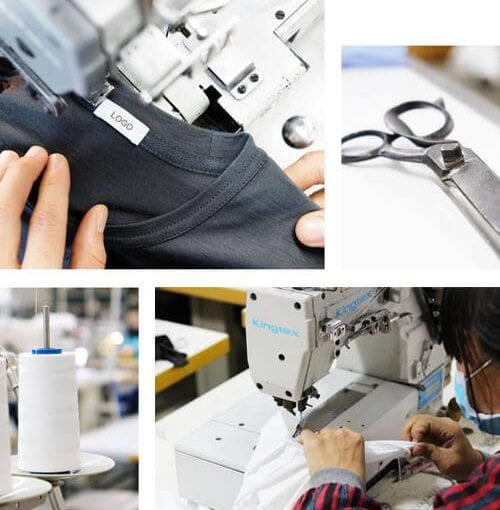In examining the textile and fashion industries of Europe It is crucial to understand the differences between regions in terms and the way manufacturing methods may differ. The phrase sweatshirt manufacturers might seem simple, however in Europe it is not. There are subtle distinctions between design, language and the norms of industry which make the question worthy of taking a look.
In this piece we’ll look at the names of sweatshirt makers across Europe and how they function and how they compare against those of other countries. In addition, we’ll examine the most important aspects of the business and focus on providing an picture of the function they play in the production of quality clothing.
Sweatshirt Manufacturing in Europe: Key Terminology
In a lot of areas of Europe and especially in fashionable nations such as France, Italy, and Germany A sweatshirt producer is usually referred to as an “textile manufacturer” or “garment producer.” The word “manufacturer” is widely used across various industries but, when it comes to discussing clothing the companies could focus on different types of clothing such as sweatshirts.
But, the exact terms that are used to describe these producers can differ based on the location:
- In France the sweatshirt maker could be referred to as”fabricant de vetements” in France “fabricant de vetements,” that translates to a manufacturers of clothing.
- In Italy, terms like “produttore di abbigliamento” or “produttore tessile” are commonly used.
Every country’s language illustrates its rich past of fashion and production of textiles which shows how important the production of clothes is integral to European cultural.
The European Sweatshirt Industry is compared to other regions
- Asian Production of Sweatshirts Contrast this with Asian producers, especially in China, India, and Bangladesh have a dominant position in the world market through large-scale production. Though the majority of Asian companies focus on volume however, some are now incorporating sustainable practices as well as improving their working conditions. The downside is that large-scale production could often result in a lower level of concentration on detail than European equivalents.
- North American Sweatshirt Manufacturing: In North America, particularly the U.S., sweatshirt manufacturers tend to balance mass production and an increasing demand for eco-friendly fashion. Even though large-scale production does exist however, there’s a growing trend to smaller, localized production units, much like Europe that emphasize high-quality rather than the quantity.
Important Facts on Fabrication of Sweatshirts in Europe
The European fashion industry is extremely regulated and innovating. Below are some important facts regarding the production of sweatshirts in Europe:
- The Sustainability Concentration:
Europe has some of the most stringent laws on labor and environmental protection. European Union policies assure that manufacturing of textiles follows sustainable practices that reduce total environmental impacts. The majority of European sweatshirt makers are with recycled or organic products.
- Craftsmanship and Design:
Countries such as Italy and France are renowned for their long-standing tradition of expertise in fashion. A lot of European manufactures rely on traditional techniques and incorporate modern technologies, which outcome in clothes of high-end quality which last.
- Fair Labor Practices:
Sweatshirt makers across Europe are usually praised for their fair compensation and a safe workplace. Contrary to the regions where fast fashion prevails, European brands tend to maintain higher standards for worker’ rights.
- Small batch production:
A lot of European producers operate in smaller batches. This allows for greater the flexibility to design and manufacture. This is an ideal opportunity for businesses seeking to create limited-edition or customized sweatshirts. This ensures the quality of each item is up to standard.

The Role of Technology in European Manufacturing
Even though European sweatshirt producers focus on craftsmanship that is traditional, technology plays an equally important aspect in today’s production. A lot of companies employ advanced equipment to cut, stitch and completing the garments to ensure that the same quality is maintained for every sweatshirt.
3D design software as well as automated sewing machines as well as computerized embroidery, have been common tools within the European textile manufacturing. These machines allow for accuracy when producing while decreasing production waste and assisting in sustainability initiatives in the textile industry.
How to Choose a Sweatshirt Manufacturer in Europe
If you are looking to purchase a sweatshirt from a manufacturer within Europe There are a variety of things to think about:
- Material Sourcing:
Determine whether the company makes use of organic or sustainable materials because the majority of European businesses are committed to together eco-friendly materials.
- Certifications:
Check for accreditations such as GOTS (Global Organic Textile Standard) or OEKO TEX. Both indicates compliance with high quality standards for safety and environmental protection.
- Design Flexibility:
A lot of European companies offer customized designs as well as limited editions, make sure you choose a product that fits with your artistic vision.
Conclusion
The manufacturers of sweaters across Europe have been recognized as having their dedication to sustainability, quality as well as ethical methods. Though the language and practice can differ between regions area, their focus is in creating clothes that do not just look great, but have been designed to last. Focusing on the small-scale production process together sustainable materials and incorporating the latest technology, European sweatshirt manufacturers offer the unique combination of traditional and modernity.
Understanding the major differentiators among European makers and the ones from different regions, companies are able to make informed choices about the perfect places to purchase sweatshirts as well as how they match their choices of production in line with the values of their brands.
